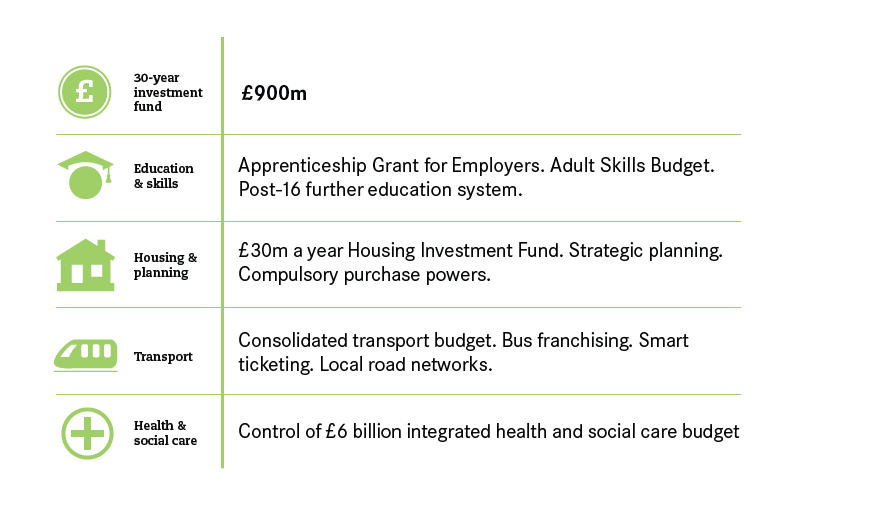
Explore the results of the mayoral elections in Greater London, Greater Manchester, West Midlands, Liverpool City Region, Tees Valley, Cambridgeshire and Peterborough, West of England and West Yorkshire.
In May 2021, Labour’s Andy Burnham was re-elected as the Mayor of Greater Manchester, winning 67.3% of the vote. Second was Conservative candidate Laura Kathryn Evans with 19.6%. Turnout was 34.7%
This page brings together the key facts and figures about the area’s economy and asks what local residents see as the top priorities for the metro mayor.
Greater Manchester consists of the following local authorities: Bolton, Bury, Manchester, Oldham, Rochdale, Salford, Stockport, Tameside, Trafford and Wigan.
Understanding how the city-region performs on key areas like productivity and employment helps the metro mayor to assess what they should prioritise. The table below shows how Greater Manchester compares to the UK average on these indicators.
Below is a summary of the powers the new Greater Manchester metro mayor has. The metro mayor has control over an integrated health and social care budget for the area, unlike the London mayor, who does not.

We outlined three priorities that the Greater Manchester metro mayor should prioritise.

Explore the results of the mayoral elections in Greater London, Greater Manchester, West Midlands, Liverpool City Region, Tees Valley, Cambridgeshire and Peterborough, West of England and West Yorkshire.

What are metro mayors and what do they do?

Andy Burnham has been re-elected as the Mayor of Greater Manchester. Now he must build back better from the pandemic and improve the economy and people’s living standards for the long-term.

This briefing sets out three policy priorities for the new metro mayor after the election to address the biggest issues facing Greater Manchester's economy.